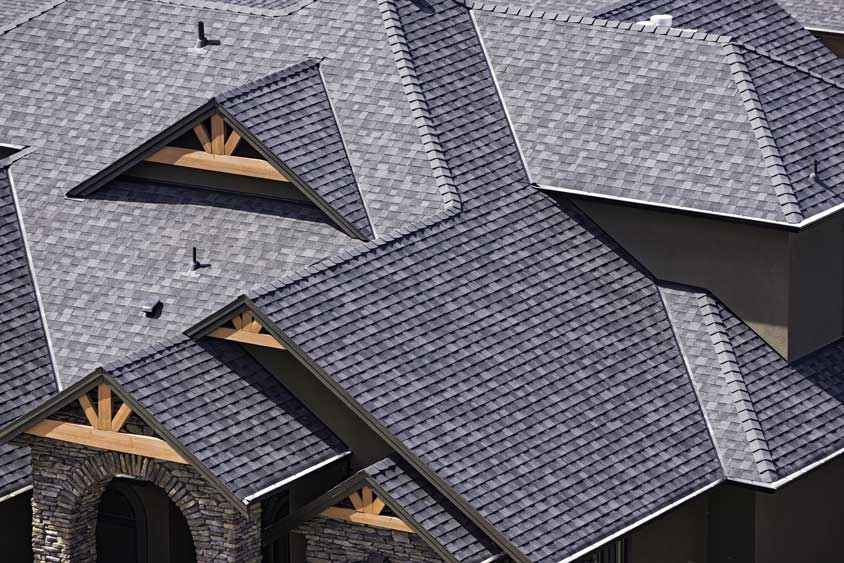Most of us are very familiar with some of the more conventional roofing materials, such as asphalt shingles or tiling. However, there are many roofing materials available to homeowners with varying properties. If you are thinking about installing a new roof, you should carefully consider the benefits of each material to determine which one is best for you. You should think about the appearance, longevity, cost, and structural practicalities of the material.
Asphalt Shingles
Asphalt shingles are easily among the most popular roofing materials used in North America. They typically come with a 30-year warranty and when a shingle is damaged or compromised, you can easily replace it. Every roofing company on the planet offers asphalt shingles and what makes them so unique is their ability to adapt to your roof. Asphalt shingles are also very affordable, easy to install, and relatively long-lasting.
Metal Roofing
Metal roofs are becoming increasingly popular among homeowners for many reasons. The material offers you a level of durability that makes it ideal for regions that experience a lot of severe weather. Metal roofs hold up incredibly well in snow, thunderstorms, and they are also fireproof. Metal roofs are also fully recyclable, which makes them an eco-friendly alternative to traditional roofing materials, and they are also energy-efficient. Metal roofs on average last up to 50 years, but some have been known to last up to 75 years.
Wood Shingles
Although wood shingles are charmingly beautiful and elegant, they can be costly to install and they are never particularly long-lived. If you live in a region that experiences a lot of humidity and moisture, then your roof will be a lot more vulnerable to damage. Wood shingles are typically found in luxury homes and other upscale residential properties. The material comes in a wide range of shades and hues, and its longevity will ultimately depend on the climate in which you live and the amount of maintenance you put into your roof. In dry conditions, your wood shingle roof can last up to 60 years, but in wet and humid conditions, it will last for roughly 20 years.
Clay Tiling
Made from clay that the earth naturally produces, the tiles are typically molded into interlocking shapes to achieve greater structural stability. Clay tiling is an ideal material for anyone who lives in a hotter climate which is why you see so many homes in southern regions of the United States with these roofs. Clay tiling is among the more expensive roofing materials, but it will last you an entire lifetime.
Slate
Slate roofs will also cost you a considerable amount of money to install, but the material is unbelievably durable and you won’t need to replace your roof ever again. Slate offers you a more sleek and pristine look, and the material usually comes in small, thin sheets because it’s easy to cut down. Installing slate shingles or tiling, however, requires specialized training and tools to get the job done.
Concrete Tile
Concrete tiling essentially serves as a cost-effective alternative to clay and slate installations. The material also comes in a variety of profiles that closely resemble clay tiling, but at the same time, it provides a unique decorative layout for your roof. Concrete tiles are extremely heavy and sturdy, which makes them an ideal choice for regions that experience a lot of high winds. The average lifespan of concrete tile is roughly 50 years, and it will cost you about a third of the price of clay tile.
Consulting a Reliable Contractor
Before making any decisions, you should always consult your constructor to determine which roofing material is right for you. A reputable service provider should have the knowledge and experience to explain the pros and cons of every type of roofing installation. You should also request an estimate to determine if your new roof will meet your budgetary requirements. If you have any questions, then feel free to give us a call. One of our team members will tell you everything you need to know about roofing repair and installation services.


